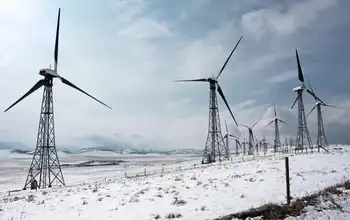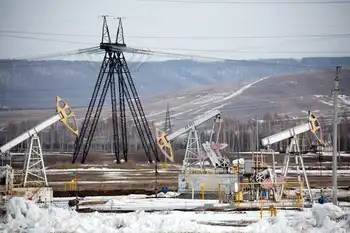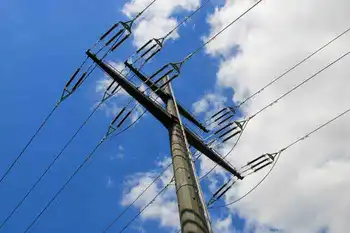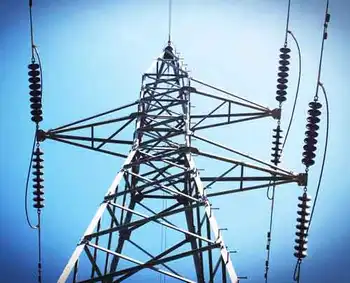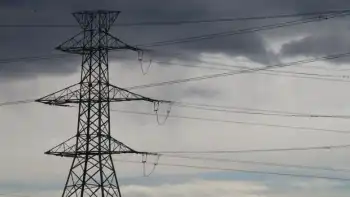Britons take a shine to energy conservation
By International Herald Tribune
NFPA 70e Training
Our customized live online or in‑person group training can be delivered to your staff at your location.

- Live Online
- 6 hours Instructor-led
- Group Training Available
"I'm like one of those fellows who stands at the station spotting trains, only what I do is electricity," he says.
Even today, a meticulous handwritten chart on the wall of the sitting- room documents yearly electricity use since the 1960s, recording how the birth of each child in the 1970s — Phillip, Catherine and Helen — now all fully grown, affected the home's average daily electricity consumption.
The latest addition to the tidy house in Hove he shares with his wife, Brenda, is a small box hanging in the front hall — dubbed a "smart meter " — that displays a continuous digital readout of home electricity use, and how much it will cost the Marchants.
This type of meter takes information normally hidden in the basement or a cupboard and puts it in a place consumers can readily access, helping to save energy through feedback.
Turn on a computer and the reading on the smart meter goes from 300 to 400 watts per hour. Turn off the light and it goes from 299 to 215.
"You walk by and wonder, 'Why is it up?' Or see 295 and think, 'That's not bad,"' said Marchant, a gray-haired man with sensible shoes and wire-rimmed glasses over bright blue eyes. "The girls yell upstairs, 'You're over 400."'
At 500, the meter is set to sound an alarm.
"I've become like one of Pavlov's dogs — every time it bleeps I think I'm going to take one of those pans off the stove," Brenda Marchant said. "I'd do anything to make it stop. It helps you change your habits."
Through a host of small efforts like this, people like the Marchants have reduced their carbon footprint by half in the last five years. Although smart meters are currently an experiment in Britain, in tens of thousands of homes, the government is debating a plan to put smart metering on all 46 million home gas and electricity meters in the country.
Just as movie stars build eco-mansions, families here have made their old Victorian houses eco-friendly, too. But they have done it through a host of minor, inexpensive interventions like under-the-roof insulation, solar water heaters and hallway meters that leave their homes looking, well, like old Victorian houses.
"When people talk about an eco-house they picture a sleek house in the countryside with solar panels and wind turbines. Well, good for them. But that's not how the average person lives," said Mischa Hewitt of the British Low Carbon Trust, which helped to organize a series of Eco-Open Houses here on weekends so that Brighton's residents could show each other what they have done. "What's more important, what we're encouraging, is to take old properties that were not built for energy efficiency and turn them around to save carbon, save energy and save money," she said.
Brighton was voted most sustainable city in the United Kingdom last year by the British research group Forum for the Future. Its politicians recently have made reducing carbon emissions a high- profile public priority, helping to bring eco-consciousness to the trenches, to the very ordinary houses and apartments where most people live.
While most governments use the relatively high emission levels of the 1990s as a baseline against which to measure emission reductions, Brighton is aiming for make a 20 percent reduction from 2006, by April 2012.
That means reducing its emissions by an average of 4 percent per year for the next four years. The city has taken measures like expanding bus services and promoting housing developments that do not permit cars. But about 20 percent of greenhouse gas emissions come from private homes, and so every house must do its bit to meet such ambitious targets.
That it why the town council of Brighton, an artsy community with a long tradition of holding open houses in artists' homes, decided to sponsor the eco-open houses this year.
For the Marchants, the two structural modifications they made to their home of 20 years were to install a solar water heating panel on a back roof, at a cost of £3,200 after a local grant) and to place 12 inches, or 30 centimeters, of insulation under the roof, which Brenda Marchant rolled out in the eves herself and which cost: £300.
But there have been dozens of behavior changes as well. Brenda, for example, has a lovely chandelier in the dining room with Regular light bulbs that use more energy. She turns it on only for dinner parties now She now washes most laundry at 30 degrees, instead of 60. She has revived the use of her pressure cooker for vegetables.
"We didn't start to reduce our carbon footprint — we've staggered from one awareness to another," Jeffrey Marchant said. "We're not talking rocket science. We're talking simple things."
When Peter Kaufman and his partner bought their row house here three years ago, they followed a similar principle Coming originally from a part of Austria imbued with green culture, they had wanted to build an eco-house from scratch, but the cost prevented that.
After moving here to work at the University of Sussex, they instead purchased a rundown 120-year-old Victorian row house that was, Kaufman said, "absolutely lovely." Still, "from an energy point of view the house was a disaster," her said in a room cluttered with toys of their one-year-old daughter.
"No one was thinking about energy efficiency when these homes were built," he said. "There were draughts everywhere. And English people thought it was normal. They love it." With a limited budget of £40,000, they focused on renovations that would be energy-saving and set about improving the way the house took in, and held, heat. "People always think about gadgets and technology, but this first thing to do is insulate, insulate, insulate," he said.
In addition, they sealed north-facing windows and created eight new ones on the south facade, all fitted with high quality frames and panes.
Kaufman was not planning to install a smart meter, but was given one as a present for participating in the eco- open house project. It now hangs on the kitchen wall. "It's been very eye-opening, even though I was already sensitive to these things," he said, noting with satisfaction that the meter read only 117 with the ultraefficient Miele dishwasher humming.
"'Look: when you turn on the kettle is goes up to 200," he pointed out, turning on the electric kettle. "It takes a huge amount of energy, one of the worst appliances in the house." He has discovered that one living room lamp used 300 watts, the other 140. He points to the former, an elaborate sculptural contraption with spiraling metal arms and bulbs. Henceforth it will just be art: "I've decided not to use it anymore." A small number of countries, like Sweden, and states, like California, as well as companies have also been experimenting with smart metering in homes in the past few years, generally with success.
The British government will require that all medium- and large-size business install smart meters within the next five years and will decide by year's end whether to mandate them for private homes as well.
"Smart meters have the power to revolutionize people's relationship with the energy they use," said the Conservative leader David Cameron in a speech before Parliament in June supporting the plan, reflecting a government that had become ever-more conscious of energy and environment as well.
Two years ago when Kaufman applied to put a solar panel on the roof of his Victorian home, the town of Brighton said no.
"They said it had to look like a red tile, which of course wouldn't work," he said. "They didn't think about energy, just architectural conservation."
The council eventually relented.
Now, he said, to get a grant for solar heaters you have to get up really early in the morning to wait in line, because they run out early.
"Here the mind-set has switched," he said.








